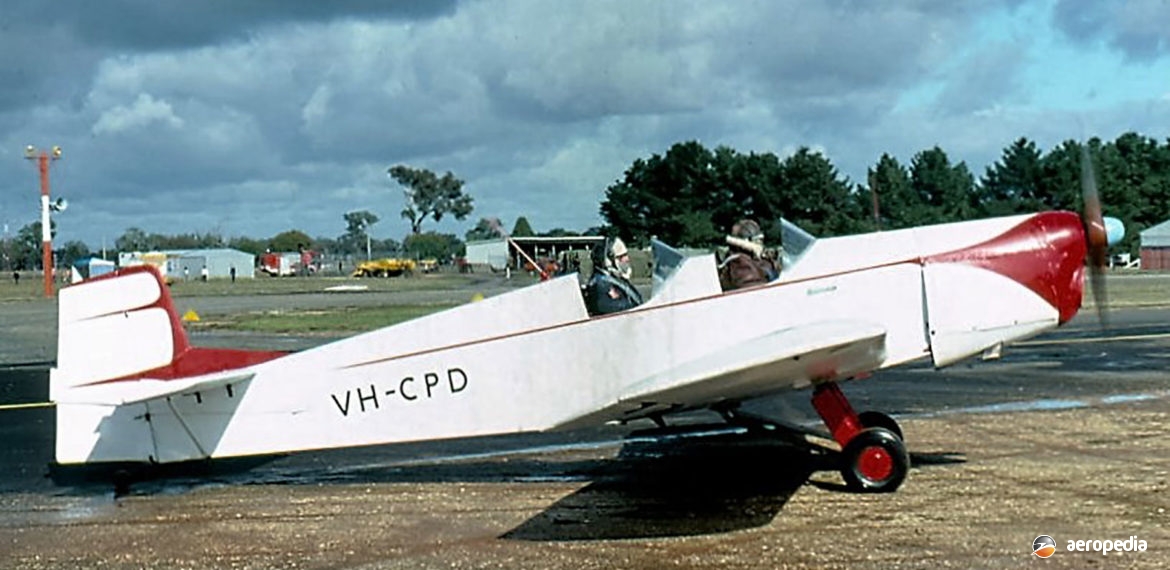Photograph:
Druine D-5 Turbi VH-CPD (c/n W.2) at Mangalore, VIC in 1982 after flying across Australia (David C Eyre)
Country of origin:
France
Description:
Two-seat light sport monoplane
Power Plant:
One 45 kw (60 hp) Walter Mikron II four-cylinder in-line air-cooled engine
Specifications:
- Wingspan: 8.7 m (28 ft 6 in)
- Length: 6.86 m (22 ft 6 in)
- Wing area: 12.91 m² (139 sq ft)
- Max speed: 161 km/h (100 mph)
- Cruising speed: 137 km/h (85 mph)
- Stalling speed: 72 km/h (45 mph)
- Initial rate of climb: 168 m/min (550 ft/min)
- Range: 515 km (320 miles)
- Empty weight: 310 kg (684 lb)
- Loaded weight: 544 kg (1,200 lb)
History:
The Druine D-5 Turbi was designed by the late Roger Druine in France as a two-seat development of the very successful Druine Turbulent single-seat light aircraft. Examples have been built throughout the world by amateur constructors, and a wide variety of engines has been installed, including the 34 kw (45 hp) Beaussier, 48 kw (65 hp) Continental A-65, 39 kw (52 hp) Zundapp, and the 56 kw (75 hp) Minie or Regnier.
Two examples have been completed in Australia, the first being VH-CPD (c/n WA.2, later changed to W.2) which, based in Western Australia, has visited the eastern States on a couple of occasions for aviation events, the first being Easter 1978, to a fly-in at Bowral, NSW; and on another occasion to the Sports Aircraft Association fly-in at Mangalore, VIC at Easter 1982.
The second became VH-NVP (c/n Q.40) in August 1992 to its builder at Walcha, NSW. It is known work commenced on the construction of a number of others but they are not known to have been completed.
Further airframe numbers were issued by the Sport Aircraft Association (SAA) of Australia to further constructors in Western Australia for Druine Turbis, these being c/ns W.3 and W.4, but only W.2 is known to have been completed and registered, becoming VH-CPD (above).
The Turbi’s construction was similar to the smaller Turbulent. The fuselage was a rectangular box structure with four longerons, wooden frames, a curved turtle deck and plywood covering. The empennage structure was of wood, the tailplane and fin being plywood covered, and the elevator and rudder being fabric covered. The wing was built in one piece with two spruce spars. The leading-edge was plywood covered and the remainder of the wing was fabric covered.

